OK, riddle me this, you’re standing in a pool store’s showroom and you’re in awe of all the shiny new pumps. You finally make your decision on the model you want and have a hunch it will work well in your 20 000-gallon pool, but the salesperson drops a bomb on your plans by asking the simple question, “What is your feet of head?” Wait a minute, what? My head is about 10 inches. but I’ve never actually measured my own skull…
Wrong head.
Total Dynamic Head (TDH) refers to the total equivalent height that a fluid will be pumped by taking into consideration any friction losses in the pipe. Essentially “dynamic head” is the measurement of resistance working against your pool pump as it pulls water from your basin and pushes it back to the pool. The total sum of the pipes’ lengths, rise in elevation and addition of 45-degree /90-degree turns will affect the feet of head number. All the aforementioned plumbing quirks add up to more friction the water accrues as it travels. The more friction, the harder the pump must work to push the water through the pipe, which demands that you go to a higher HP or use a larger pipe. If you need to install a new pump or replace your filter, you need to calculate the system’s feet of head to determine the best fit. A pump’s flow rate is dependent on the feet of head.
If you need to install a new pump or replace your filter, you need to calculate the system’s feet of head to determine the best fit. A pump’s flow rate is dependent on the feet of head of your plumbing system, and that measurement is featured in every pump curve chart. If you want to turn over your 20 000 gallons once in 5 hours, you will need to average at least 67 gallons per minute (GPM). We will use that GPM to calculate our pool’s feet of head.
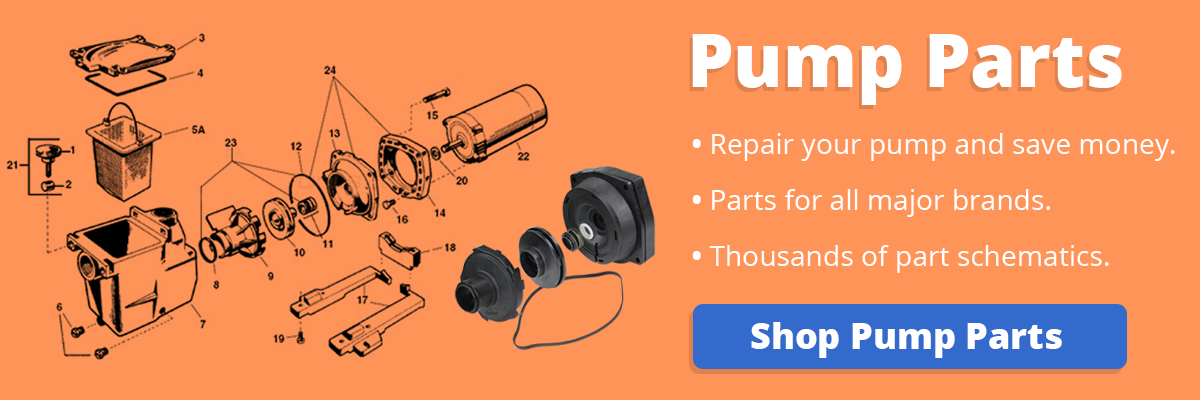
Measure the Lengths of All the Pipes
Yes, I mean all. Measure the pipes’ lengths that span from your main drains, skimmers and any other suction ports that draw water from your pool. While measuring lengths, also note the depth of the pipe as well as the number of turns and the type (45-degree or 90-degree.) The type of turns will affect the friction loss as we total up at the end. Measure the lengths of the pressure side pipes in the same manner, noting the degree of turns and any valves you can see. The chart shows the feet of head per 100 feet of pipe according to the pipe diameter of Schedule 40 PVC in congruence with the flow rate of your pump. So, let us estimate you have 200 feet of 2” PVC with a flow rate of 70 GPM, your feet of head would be 15.2.
| GPM | 1-1/2" PVC | 2" PVC |
|---|---|---|
| 40 | 9.43 | 2.75 |
| 50 | 14.3 | 4.16 |
| 60 | 20 | 5.84 |
| 70 | 28.6 | 7.76 |
| 80 | 36.7 | 9.94 |
On top of that 15.2 feet of heads, you can add the rise in elevation from the pool’s surface to the pump. For example, if the pool’s pump is 3’ above your pool’s surface, add 3’ feet to 15.2.
Pipe section feet of head: 18.2
Because you know the gallons of your pool and you know that you want to turn over your water twice, you can calculate the desired rate of flow to turn it over in a period of 3-5 hours.
Add up the Dips, Turns, and Twists
We must now add in the effect of all the valves, turns and couplings in your plumbing line. Each of those plumbing add-ons tack on a value of feet of head to your plumbing line. The value will vary according to the flow rate you put in. I used 70 GPM as our flow rate in my calculations.
The table below provides the equivalent feet of straight pipe for representative connectors for 1 ½’ and 2’ at 70 GPM. The total of these values will have to be converted to feet of head as we will show in the example:
| Description | 1-1/2" PVC | 2" PVC |
|---|---|---|
| 45-Degree Elbow | 2.4 | 3.1 |
| 90-Degree Elbow | 7.6 | 8.7 |
| Check Valve | 1.7 | 2.2 |
| 3-Way Diverter Valve | 2.5 | 2.3 |
| 2-Way Diverter Valve | 1 | .7 |
| Tee | 6.2 | 7.5 |
| Coupling | 1.5 | 2 |
| Count | Description |
|---|---|
| 5 x 8.7 = 43.5’ | 90-Degree Elbows |
| 4 x 2.0 = 8.0’ | Couplings |
| 3 x 2.2 = 6.6’ | Check Valves |
| 1 x 2.3 = 2.3’ | 3-Way Diverter Valve |
| 60.4 / 100 x 7.76 = 4.69 | Total of 4.69 added feet of head for connectors. |
Total of 60.4 added equivalent feet of straight pipe.
To convert this value to feet of head, multiply 60.4 ‘ by the same number used in the length of pipe calculation above for 70 GPM and 2’ PVC diameter pipe, 7.76 per 100’ of pipe.
60.4 / 100 x 7.76 = 4.69
Total of 4.69 added feet of head for connectors.
Don’t Forget Your Filter, Valve or Heaters
Filters can be a real drag on water as it rushes through your plumbing. So, we must account for that extra resistance. Pentair has a thorough Head Loss Chart that lists the ratings for their products. You may not have a Pentair, but the ratings should give you an idea of where your similar sized filter will fall on the chart. For your specific model’s head loss rating, check your owner’s manual or contact the manufacturer. Click the chart for an expanded view.
As for heaters, the head loss varies depending on flow rate and model. Here is a graph of Hayward listed flow rates to give you an idea, what the ranges may be. To be on the safe side I would add 15 feet of head to the count for a preliminary calculation, but for an actual number you will need to contact the manufacturer for calculations.
| GPM | Feet of Head |
|---|---|
| 40 | 5.12 |
| 50 | 6.16 |
| 60 | 7.23 |
| 70 | 7.5 |
| 80 | 7.8 |
| 90 | 8.84 |
| 100 | 9.86 |
The final total:
Pipe lengths and rise = 18.2
Valves and turns = 4.7
Cartridge filter 70 sq. ft. = 7.5
Heater = 7.5
Total feet of head = 37.9

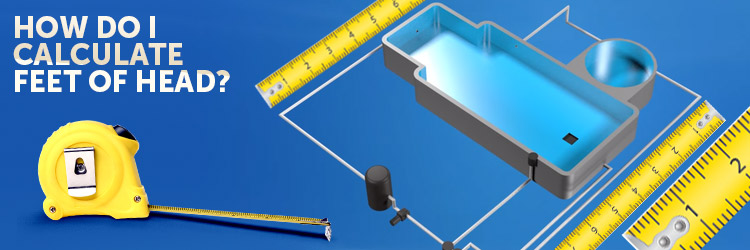

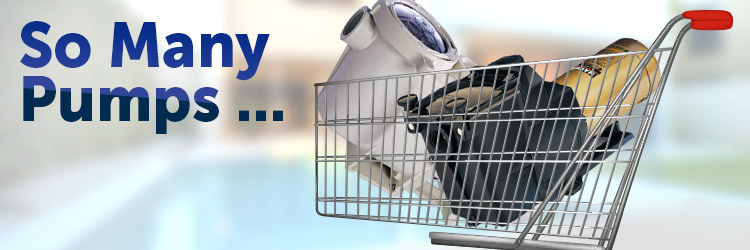
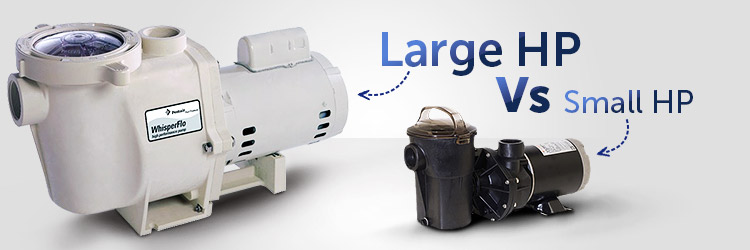
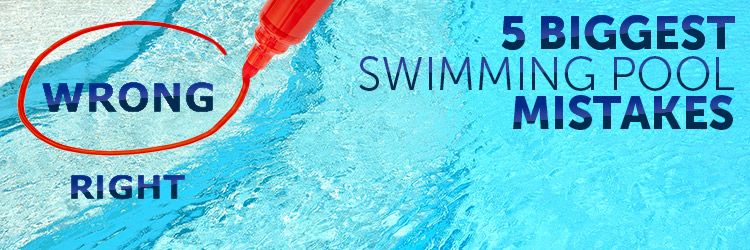






Where EXACTLY can I find the Pentair Products Friction Loss Charts?
This is a great article and I am drawing a few conclusions.
First, only your pool builder knows what they put in the ground and buried. Without the builder providing a precise layout there is no reasonable way to calculate the pipe lengths and number of connectors. Conclusion: If the builder does not/will not provide the information you are out of luck.
Second, knowing your TDH is especially important when you are replacing the pump so that you get the correct size pump for your application.
Third, if you want to know your TDH in order to calculate the your flow rate at RPM so that you can take best advantage of your variable speed pump they you may be better off with an accurate flow meter.
Am I off base on my conclusions?
Isn’t the purpose of TDH to get the right size pump (HP) to meet the Industry Standard of turning the water in a commercial pool over at least every six hours?
How do you calculate feet of head when the plumbing lines are underground and you were not the owner that had the pool installed (meaning no measurements or plans are available)?
How To Measure Total Dynamic Head With Gauges
This description would be if you have a pool pump. If so, say have a Pentair Superflo Variable Speed pool Pump. The bottom port nearest the leaf basket would be where you attach the vacuum gauge (Water coming in) and the port near the back would be where you attach the PSI gauge (Water going out). whatever speed (RPMs) the pump is running at, you note the Vacuum and the PSI readings. multiply the vacuum reading by 1.13 and multiply the PSI reading by 2.31. Add those two results together, that is your TDH for that speed. To determine the flow rate, you would need the pump model’s flow rate curve sheet and use the total TDH reading you calculated on the left-hand side of the curve sheet and draw a line to the right where it intersects with the RPMs (Designated by the curves displayed). Wherever they cross draw a straight line to the bottom to see what the “Flow” rate number is. The curve sheet has flow number designations from left to right. I hope this helps 🙂
I have a TA60D sand filter, just replaced an old 1HP pump. New pump is an extreme 1.5HP dual speed. While it is quiet every time I empty the basket it is a real pain to get it to prime. 35k gallons 2x skimmer’s and 1x main drain. 20x 40, 8’ deep end, 3 ft shallow but corners are cut off. Figuring about 90’ 1 1/2 pipe. Do I need a pump with higher head ?
It would be more helpful to know the make and model of the pump you replaced. If the original pump was priming in a respectable amount of time, you could use that as a baseline. Not all 1 HP and 1.5 HP pumps push the same amount of water; there are high flow/pressure pumps, and there are uprate and full-rate scales to consider. If you replace a 1 HP full-rate Tri-star with a lower flow pump with a 1.5 uprate, you would see a drop in flow rates.
You will also have issues priming the pump if the low speed is used to prime the pump. Or, you could have an air leak somewhere.
Wouldn’t the types of runs also be relevant if they were in parallel (independent home runs) versus combined? For example, many pool builders are lazy and connect skimmers to each other, on a single pipe run, and to make matters worse, they connect the main drain to the skimmers.
I had my builder do a separate run for my two skimmers, and separate run for the main drain. Therefore, the diameter of the pipes in reality are not 1.5” each, but rather some more complex combination of all 3 suction lines in total.
The calculations then get even more complex, when you have a mixture of 2” piping in the filter area, and 1.5” on all the runs. All my suctions are immediately converted to 2” before any turns near the filter, then combined. Also, bad plumbing design is also a factor. Many pool builders use “T” connectors, where two opposing water forces are combined, this will greatly increase the fraction. Better to have one main line, and gradually bring in all your flows with “T” only combining at a 90 degree into a pipe.
In my pool, the main drain 2” pipe has two separate “T” to bring in each skimmer. Another factor is the straight pipes before and after the pump and filter, the pipe length should alway be at least 4X the piper diameter (i.e. a 2” pipe, should always have at least a 8” straight before & after pump / filter).
My 1 HP Hayward super pump with a Hayward 300 pound S244T filter, has been running new at 9 psi. That means I’m at maximum energy efficiency. Despite what your pool builder tells you, a 1 HP pump running for 12 hours to turn over a pool, is more energy efficient, than a 2 HP which turns the pool over in 8 hours. You’re using more energy and therefore the greater the force through the pipes, the greater the friction, and greater the energy loss.
The design of the pipe diameter is also significant in your design. The pipe diameter to the pressure is an inverse square law. It means, when you take water from a 4” pipe to a 2” pipe, the pressure increases from 10 psi to 40 psi. Something to keep in mind, when you take your 2” pipe down to 1.5”, theoretically you’re increasing the pressure.
“many pool builders are lazy and connect skimmers to each other, on a single pipe run, and to make matters worse, they connect the main drain to the skimmers.”
I just realized this is exactly how my plumbing is run. So they connected 2 skimmers and main drain somewhere all together underground and then a stub out of a 2.5″ pipe reduced to a 2″ for the pump. I really don’t know if it is worth the trouble to dig everything up. No way to figure the total head. 32K gallon pool. So to be safe would I get a 3 HP?
Thats a lot of water to turn over, I think that would be the safest bet as long as you are getting a VS pump. Good Luck.
Very, very accurate observations. If we could all just go back to when our pool was being built!…
How many gals is your pool and what was the ft of head?
Do they make a veido for step by step to figure TDH thanks
Quick question I have two skimmers and a single inlet that the water courses through but I don’t know the angles of them as they travel underground. I don’t know if they have rigid well defined bends or if the tubing is just curved all the way to the pump. How will this effect the calculation of Feet of Head?
I would bet that (unless you had a very high end builder) that they are angled and not curved. Knowing how pool builders want to save money and do things the easy way. It would change it, so just add in how many “T” or 90 degree fitting you can best estimate. Good Luck.
I have a question concerning a Hayward HeatPro Heat-Pump (Model #HP21404T) that I recently purchased. I have searched high and low and can’t find anything published that would give me an indication of the Head-Loss for this Heat-Pump. In looking over one of the tables in this thread, I compared the Head-Loss to the calculations that I came up with based on an estimate of Titanium tube length (6 coils of 2′ diameter and estimated internal flow resistant equivalent to 1 1/2″ PVC pipe). My Head-Loss calculations are higher than what is published in this thread and I was wondering if anyone had the actual graph for this model Heat-Pump. I was planning to contact Hayward but heard that they are very reluctant to share any this type of detail with anyone but their authorized Pool Dealers. Note: I have a Pool (18,000 Gal) and Spa (800 Gal) with a 3 HP Pentair Variable Speed Filter Pump (recent retrofit), the Hayward Heat-Pump above (also a recent retrofit), a Pentair 150 sq ft Cartridge Filter (also recent retrofit), and a separate 2 HP Pentair Fixed Speed Spa Jet Pump. I have both Vacuum and Pressure gauges on my Variable Speed Filter Pump and a FloVis Flow Meter installed in my bypass loop for my Heat-Pump (also a recent addition). I’ve honed in on what appears to be the optimum setup for my pool relative to TDH and Power usage. I run my Filter Pump at 2,500 RPM most of the time, this gives me a TDH of around 45 Ft-of-H2O. My pool equipment pad is around the side of the house so long pipe runs to and back (all 2″). When I installed the Hayward Heat-Pump, I was able to cut-out about 15 feet of plumbing that the previous Jandy Heat-Pump had running around the back, up the right side, and into the front of the unit. This also allowed me to get rid of some elbows. I don’t have the TDH before and after but believe I cut out 2-3 Ft-of-H2O with these changes. There are other areas that I eventually want to tackle but overall am pleased with my setup given the pool is over 15 years old (just had it retiled and resurfaced this past Spring 2020). If anyone has TDH data on the Hayward Heat-Pump above, that would be great!